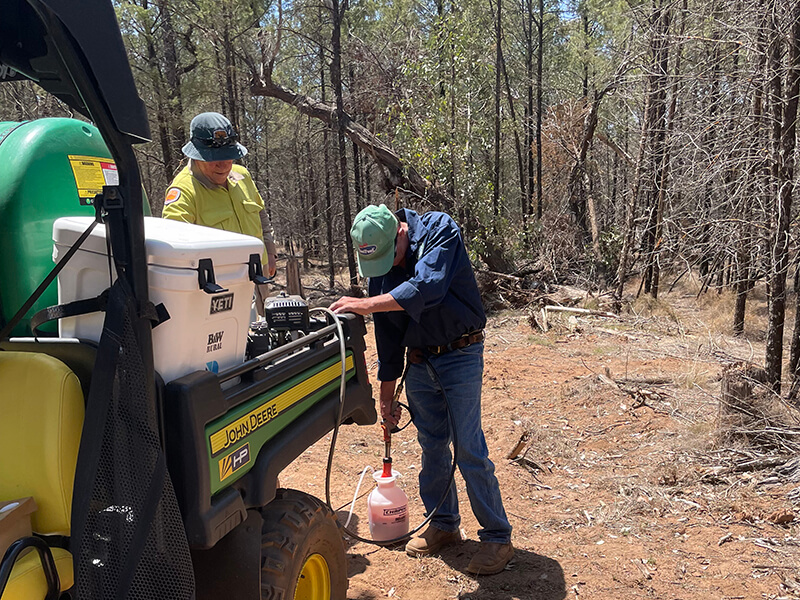Joint taskforce takes aim at Hudson pear
The eradication of Hudson pear from Quanda Reserve in the state's Central West is a step closer after a major collaboration between the NSW Government and other stakeholders to rid the reserve of the dangerous weed.
The Central West Hudson Pear Taskforce converged on the Crown reserve, between Coonamble and Coonabarabran, to spray the weeds using a team of 30 people. The team dispersed 250 litres of herbicide mixed with red dye to treat about 15,000 plants across a 28-hectare area.

The joint operation involved Crown Lands, the National Parks and Wildlife Service, Local Land Services, and Local Government Weeds Officers with input from Parkes Shire Council, Dubbo Regional Council, Forbes Shire Council, Lachlan Shire Council, Bogan Shire Council and Castlereagh Macquarie County Council.
Hudson pear is a 'regional priority' for eradication as part of the Central West Regional Weed Management Plan.
Previous operations successfully killed larger Hudson pear weeds on the reserve and the latest effort focused on eliminating juvenile plants to stop another generation gaining a foothold.
Hudson pear (Cylindropuntia pallida) is a Mexican native cactus first detected in the Lightning Ridge area in the 1960s. The extremely prickly cactus has spines encased with a detachable sheath that can remain embedded even after the spine is removed.
Crown Lands Executive Director of Land and Asset Management Greg Sullivan said Hudson pear was dangerous and work to remove it from Quanda Reserve would stop it spreading to neighbouring areas including farming and grazing land and the Warrumbungle National Park.
"Hudson pear can destroy grazing land and prevent outdoor recreation including camping and bushwalking. The spines can pierce boots and tyres and can inflict injuries to people, livestock, horses and dogs, and have been known to kill koalas and birds," Mr Sullivan said.
"Crown land reserves are used for grazing, recreation and environmental protection of native plants and animals so their management is essential for the well-being of communities."